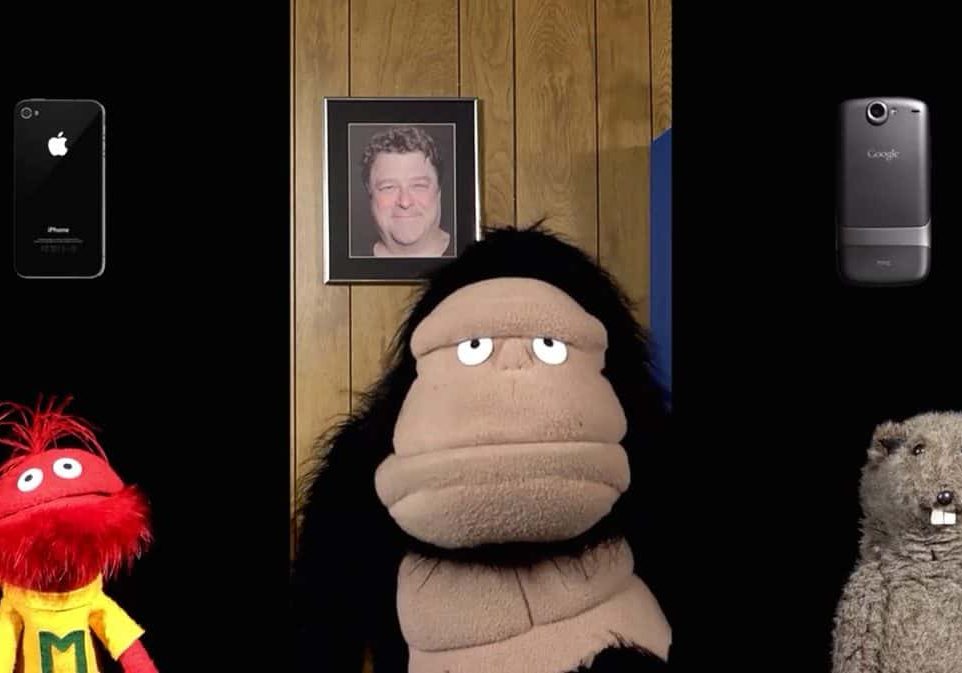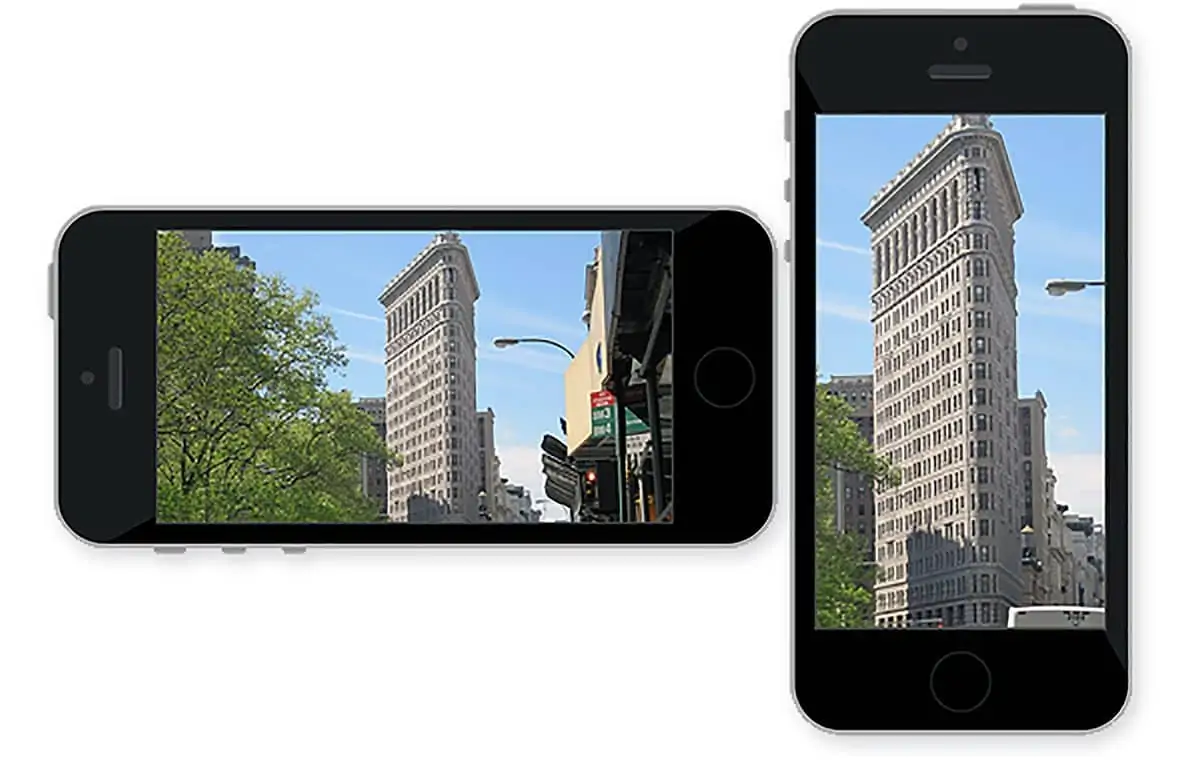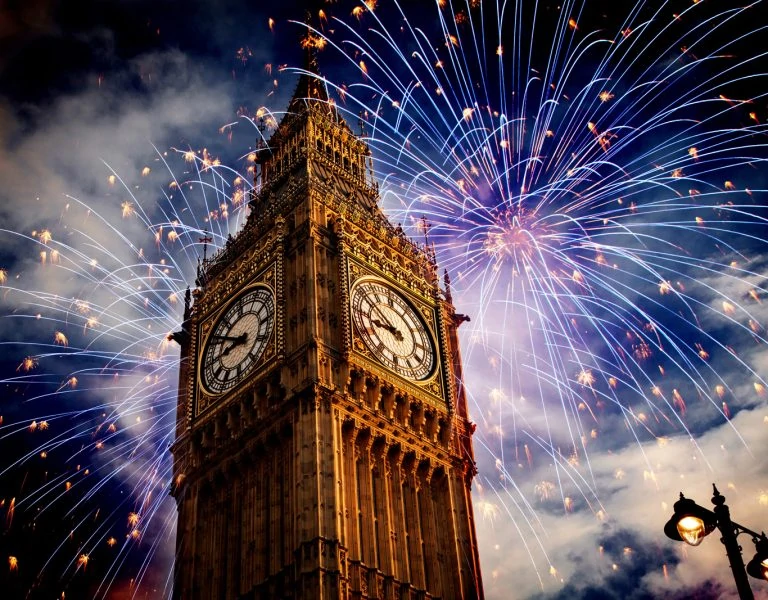Is Vertical A New Format?
GBCT News / John Keedwell

Is Vertical A New Format?
GBCT News / John Keedwell
Cinema and television pictures have always been displayed in a horizontal (or landscape) format. Yes, there have been 4:3 aspect ratios that seem almost square to us now, and there have been various "flavours" of widescreen images over the years, yet it is effectively a horizontal format. This is how the human eyes and brain see the world, and is the most natural format to use. We have two eyes and they are arranged horizontally. However, this century-old convention now has a "new kid on the block", and we should ignore it at our peril. Read on to understand why.
The mobile phone has become an icon of the last few years, and we often rely on the content, and view content via this medium. Many people now use the smartphone as a way of communicating to their friends with video and still images, and that more often than not creates some potential issues for this business.
If we watch most amateurs making a quick video, the camera is more often than not held in portrait format, creating a vertical aspect ratio video when played back. Why is that? Is it because they are lazy, or is there another reason?
Before we look at that we need understand why this has become so commonplace now, and there is a simple reason. Fundamentally the mobile phone is a phone with a camera inside. It is not a camera with a phone in it, and that's a big distinction. It is certainly more effort to hold the camera in the traditional landscape format, it requires two hands, and there is not really a firm grip on the body. Ergonomically it is more comfortable and convenient to hold it vertically. Most people watch the result on their Smartphone, and it fits the full screen nicely when held in the same way, thank you very much! So what's the issue?
Watching "Facebook live", Snapchat and Periscope videos is not cinema or television of course, yet many traditional movies are now watched on train journeys on a phone or small tablet with a reflective screen in less than favourable lighting conditions. I have often seen a major widescreen movie being watched on the Tube with the phone held in portrait format.
Clearly this is a potential issue for professionals. Or do we take a look at the market and give them what they want? There is now a large proportion of video marketing on the escalators on the London underground and in shopping malls, and the videos are often displayed in a vertical format. Clearly the video content needs to be produced with that in mind from the outset, or it goes horribly wrong, so there is clearly a potential market.
"It's not simply a case of turning the camera on its side to shoot a vertical movie! Yet there are commercials and short films specifically produced this way.
With mobile phones and tablets being used increasingly to view movies more than traditional TV, it's a factor that needs to be looked at carefully."
- John Keedwell

There was even a movement afoot to introduce the vertical video as a format, and Vervid was seen in 2015 as "the YouTube of vertical videos", showing 9:16 aspect ratio videos only. The content seemed to consist of short videos shot on a Smartphone. Yet Vervid went belly up in 2016.
There is also a YouTube channel called Glove and Boots (see header image), with videos in the style of Sesame Street puppets, with one called Vertical Video Syndrome - A PSA. It has had over 8 million views so far.
Clearly, cinema as we know it is not going to redesign all the cinemas, nor will cameras, grip gear and edit suites be redesigned to accommodate this idea. All professional cameras are designed to a standard to be used in one way, with the eyepiece on the left side of the camera and much more. It's not simply a case of turning the camera on its side to shoot a vertical movie! Yet there are commercials and short films specifically produced this way, normally with Smartphones, with all the limitations and lens quality issues there. However, with mobile phones and tablets being used increasingly to view movies more than traditional TV, it's a factor that needs to be looked at carefully. It does make me wonder if there will be a 4K TV designed to be rotated to show vertical videos!
If the consumer is given what they want then maybe there is a niche market for vertical cinema in some places. I see films about New York Skyscrapers and Easter Island statues being great subjects, yet I feel the opening shot in the first Star Wars film would have lost its impact somewhat if shown vertically!

Drone and Camera Technology
It struck me the other day that the many advances in technology in this movie business have been incredible, and the past decade has seen truly revolutionary advances that have literally shaken the business up. In looking at key contenders for the "Technology Shake-up Award" there are a few individuals and companies who have really pushed the boundaries and widened expectations beyond the normal level.
Clearly there are plenty who could be considered contenders, yet the original Red One camera surely must be up there. I am guessing you thought the Red cameras had been around for quite a lot longer? Yes, there was a development phase for a few years before the first cameras were finally delivered, and many thought it was a con at the time, yet they were developing a product nobody had ever done before! It all takes a bit of time. The camera also broke the mould with the original price point being so relatively low, making the Ultra High Definition camera affordable to many.
In the course of researching for this article, I found when the Red One camera came into full production and delivery to paying clients, and I was struck at the particular appropriate timing for this article. The first Red One cameras were delivered in August 2007. Yes, just 10 years ago this August! Happy first decade, and 10th birthday, Red!
The quest for higher resolution cameras and the ultimate move to digital cinematography since then has happened at an extremely brisk pace, and none more visible than in the area of cameras and cinema projection. The advances in technology to make a camera as capable are actually mind-boggling, yet perhaps an even more staggering steep rise has been in the area of higher quality camera drones. Looking at the commercially available drones, the sheer advances in so many areas have made this a reality, and without all of these advances working together in harmony it would not be possible.
If you had said that would happen even ten years ago you would have been laughed at heartily. Yet the drone business has only really been around since 2013. And look how far it has developed in that time.
For example, the drone knows where it is in 3D space anywhere in the world due to GPS satellite navigation. The camera is supremely well gyro-stabilised, and the advances in high capacity rechargeable batteries also needed to happen. All this, in addition to the small 4K capable camera, lightweight and bright monitor screens, advances in high power electric motors with no moving parts, autopilot with return to base if the signal is lost, waypoint navigation, motion tracking, obstacle avoidance, autonomous flying, and Wi-Fi capabilities. They also have geo ring-fencing so it's impossible to fly into restricted airspace. Some of the small amateur drones also now have facial recognition, the capability of 3D mapping, and all have the ability to live stream a HD signal back to the controller on the ground!
All this technology has primarily been developed for Smartphone demands and the military, of course. Advances in high power, lightweight batteries, new materials, clear and bright touch sensitive screen technology, along with GPS and camera technology all needed to be designed to be included in the Smartphones we carry around with us each day.
Like any new technology, the weak point of the system is often the operator or pilot, and there have been a few isolated incidents where some idiot people have flown a drone where it shouldn't be in airspace, such as flying above crowds of people who are not under your specific control. This can cause chaos with commercial flights and quite rightly there have been newspaper articles and TV news items highlighting the dangers to aircraft and others. This is giving the drone business a bad reputation with the public who don't know, and it brings in restrictions that potentially stop the creative use of drones for fantastic shots that are impossible to achieve otherwise.
This is why the Civil Aviation Authority in the United Kingdom, and the Federal Aviation Administration (FAA) in the USA have made the commercial flying of drones to now require an Unmanned Aerial Vehicle (UAV) pilot’s licence. I have completed my personal training and have now gained my wings, enabling me to fly commercially. In fact, the use of video footage or stills without first gaining a pilot's licence (and insurance etc) is prohibited. Yes, any Herbert can still go out and buy a drone and fly it about the same day, yet using any images for any gain whatsoever (such as putting it on a website) is not allowed and would be subject to a hefty fine.
All of this is good for the credibility of the business of flying drones commercially, and nobody wants to see any accident due to the actions of an idiot. The airspace maps of the UK are very highly complicated to the untrained eye, and many people would be blissfully unaware they even existed if they didn't have formal training and a rigorous flight test. Ignorance is no excuse, of course. Imagine someone being able to buy a car and then being able to drive it on the roads without any tuition at all, no insurance, and they don't even know which side if the road to drive on, the speed limits and about communicating intentions to other road users. With no idea of the rules and regulations about how to drive, it would end in chaos and many accidents, and also deaths and mayhem.
There have been some incredible shots using drones, some reminiscent of the opening scene in the classic Touch Of Evil from Orson Welles, so it is just the beginning, and there will inevitably be discussions of "is it CGI, or is it a drone?
It is another tool we can use to create a visual feast for the viewer and ultimately needs to tell us part of a story, or it hasn't worked for the film. The drone shot also needs to edit seamlessly into the ground footage or it will stand out. High quality cameras need to be used and the drone needs to be flown with a stable platform to attach a suitable camera to. That only comes from hours of practice, along with help from the engineers who design the drones systems and drone manufacturers who make them.
This is where good training is so vital and regulations need to be in place to help the legitimate drone pilot with their legitimate business, and it also needs to encourage or enforce other amateurs to get training and a licence. Make no mistake, a drone falling from any height can seriously injure and even kill someone, much like a car can in the hands of someone who is inexperienced. The actual drone should be licensed and the driver needs to be trained properly. Yes accidents can still happen, of course, yet mitigating against them happening as much as possible means we as film makers can fly with a camera in reasonable freedom, without having oppressive rules stopping us from being creative in the future.










